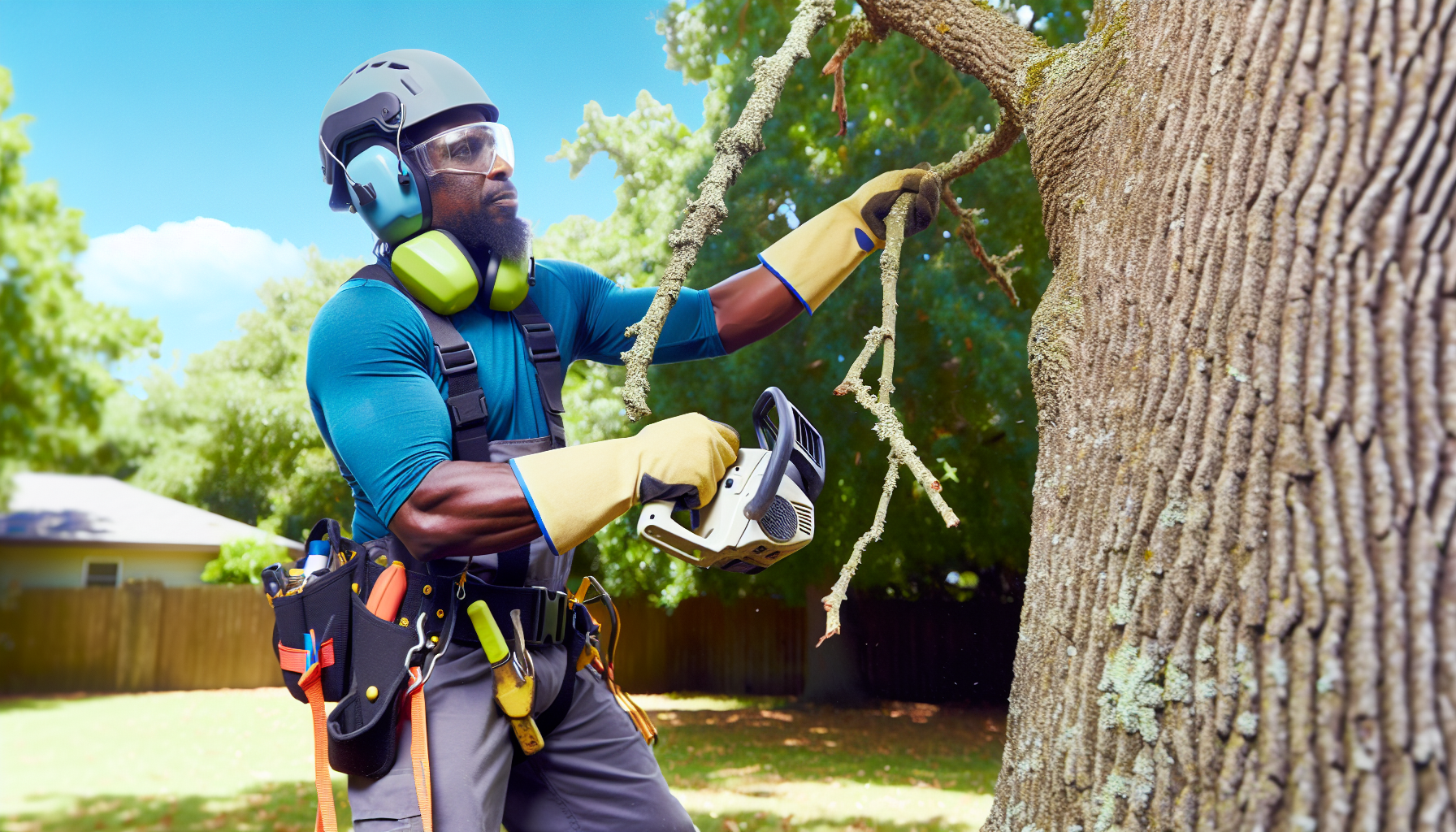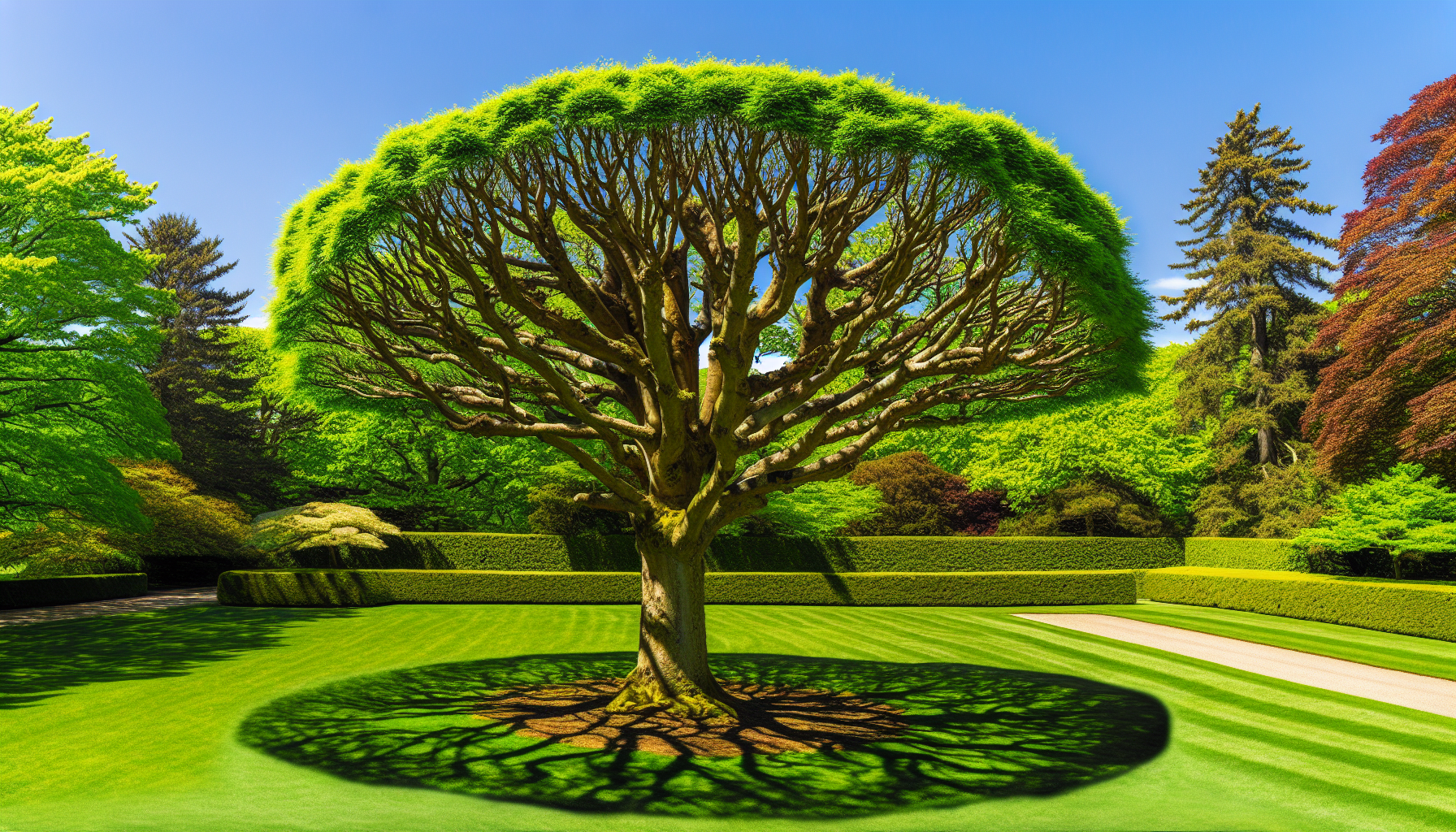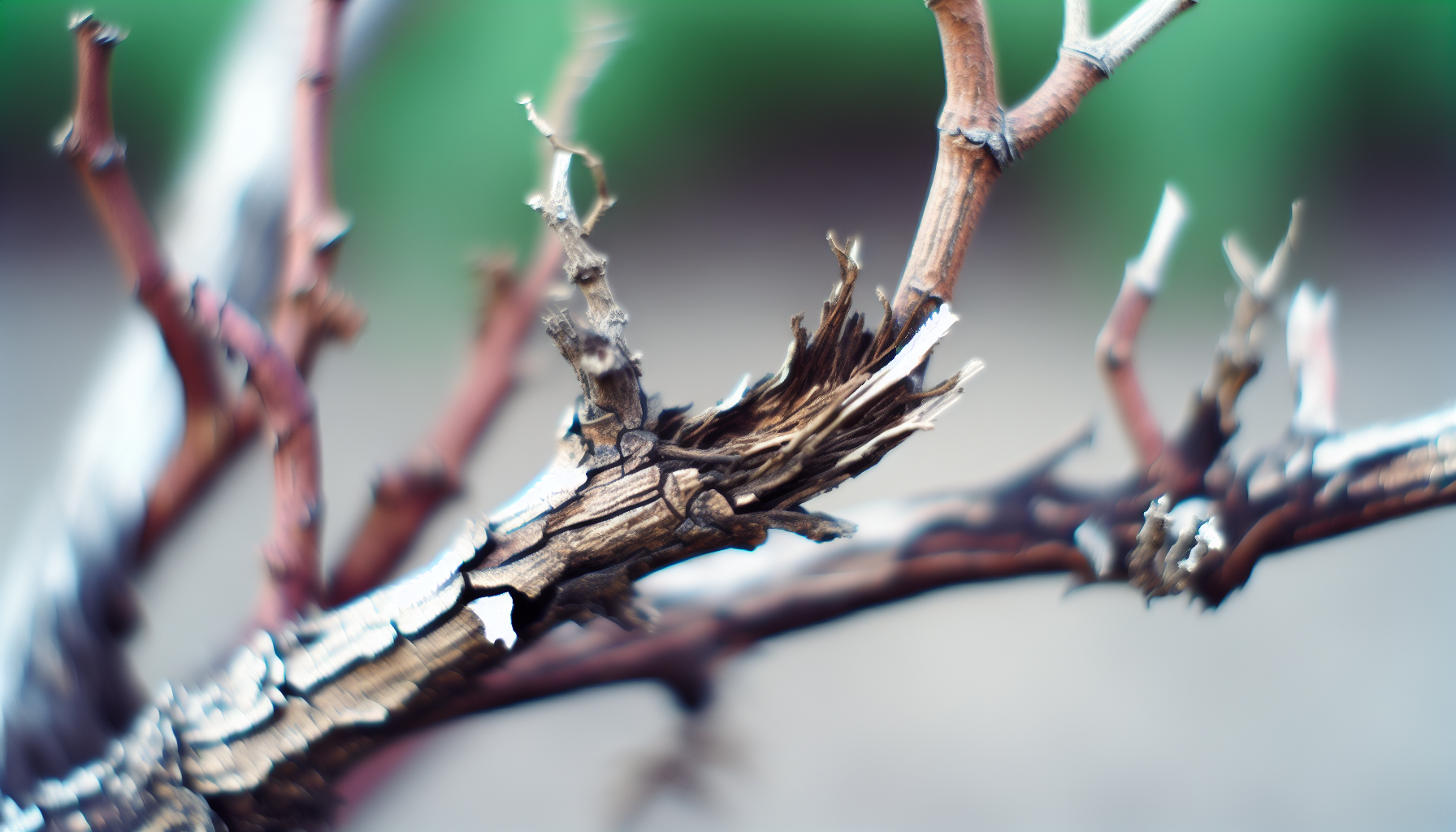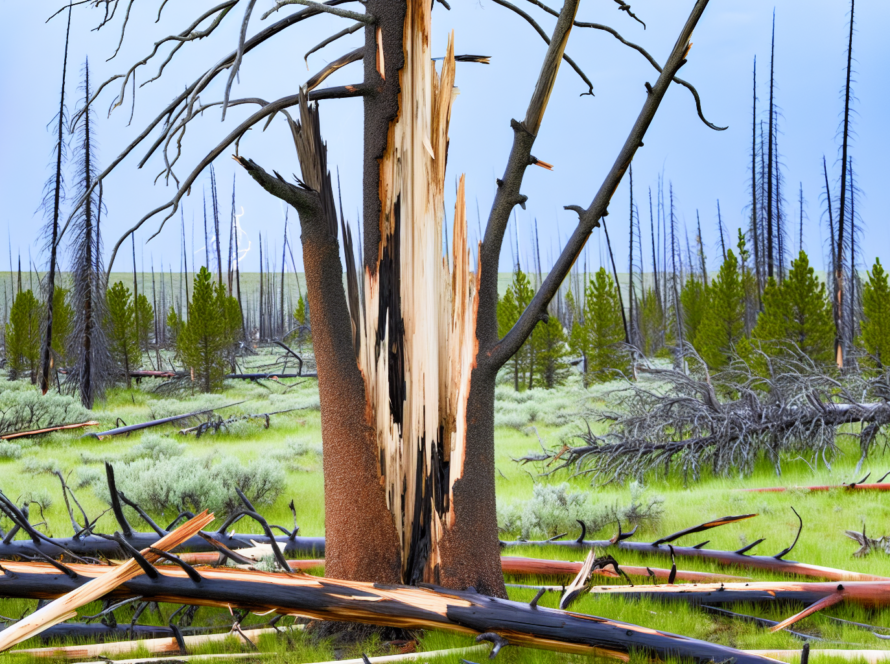Cutting dead branches on a tree is essential for its health and your safety. But, does it help to cut dead branches on tree? This preventative measure keeps disease at bay, encourages robust growth, and reduces the threat of falling limbs. Dive into our comprehensive look at the why’s and how’s of this crucial tree care practice, and learn how it truly benefits the tree.
Key Takeaways
Pruning dead branches is essential for maintaining tree health by preventing disease spread, encouraging new growth, and ensuring safety by removing potential hazards.
Identifying dead branches requires close inspection, and if confirmed, dead branches should be removed during the tree’s dormancy in winter for optimal results.
While some pruning can be a DIY task, professional tree services offer the expertise, experience, and safety measures necessary for effective tree maintenance and are equipped to manage complex pruning tasks.
The Benefits of Cutting Dead Branches

The act of pruning trees, specifically cutting dead branches, is more than just a landscaping chore. It’s a vital task that brings a myriad of benefits, not only for the tree but also for the surrounding environment and property. Removing dead branches is integral to a tree’s health, as it:
Prevents disease and pests from spreading
Encourages new growth
Improves the tree’s overall appearance
Enhances air circulation and sunlight penetration throughout the canopy
Regular tree service and pruning invigorate a tree, enabling better sun exposure throughout the canopy.
Moreover, cutting dead branches has several benefits:
Safeguards against potential breakages, improving overall tree safety, especially in urban environments where falling branches can pose a significant risk
Enhances the health of the tree by removing diseased or decaying branches
Improves the appearance of the tree, contributing to the aesthetic appeal of a property
Enhancing Tree Health
When it comes to enhancing tree health, cutting dead branches is paramount. Dead branches can be a haven for pests and diseases. These undesirable elements can invade trees through exposed bark and weakened areas, causing further damage. By removing these dead branches, trees can efficiently allocate resources to healthy limbs, fostering rejuvenation.
Further, the overall health and longevity of a tree are enhanced by the removal of non-productive or diseased limbs, reducing potential for premature tree death. Proper pruning, including removing dead branches, plays an essential role in stimulating new growth and maintaining tree vitality.
Increasing Safety

While trees can bring beauty and shade, they can also pose safety risks, especially when they house dead tree limbs or dying branches. Removing these can significantly increase safety by reducing the risk of injury or property damage from limbs that may fall during storms or high winds.
Dead branches can become dead weight, adding unwanted stress to a tree’s structure, potentially leading to falling branches and associated hazards. Therefore, engaging professional tree care is integral to maintaining a safer environment by skillfully removing hazardous limbs and branches.
Improving Aesthetics

Trees are undoubtedly the green heart of any landscape, and their aesthetic appeal is undeniable. Pruning away dead or overgrown branches helps restore the natural shape and beauty of trees, significantly contributing to the aesthetic appeal of a property.
Managing dead branches can promote a clean and well-maintained look, as excessive deadwood can create an untidy appearance. To remove dead branches is essential for trees that are well-maintained and aesthetically pleasing, which can increase a property’s resale value as they are seen as a sign of good care.
Identifying Dead Branches

Identifying dead branches is a crucial step towards maintaining the health, safety, and aesthetics of your trees. It’s not always easy to tell if a branch is dead just by looking at it. Several signs can help you determine whether a branch is dead or alive, and in the following sections, we’ll discuss these in detail.
The ‘snap test’ and the ‘scratch test’ are simple methods to gauge a branch’s life. Additionally, the condition of buds on twigs can signal a branch’s vitality, with living branches typically showcasing smooth, shiny, and well-formed buds, in contrast to the dry, shriveled buds found on dead branches.
Signs of Dead Branches
There are several tell-tale signs that a branch dies. One of the most notable signs is rigidity. Branches that are rigid and lack flexibility are often dead or dying.
The presence of broken branches or twigs on the ground around a tree can also indicate that a dead branch is present, since healthy tree branches are more flexible and less likely to break off. Dead branches typically feature bark that is dry and porous, which may lead to fungal growth due to the bark not being replenished.
Assessing Overall Tree Health
Identifying dead branches is only one aspect of assessing a tree’s overall health. A comprehensive examination of the tree, including its:
canopy
trunk
branches
roots
is crucial to detect any signs of distress or disease.
Healthy trees, including mature trees and young tree, generally exhibit a full canopy of green leaves, straight trunks with intact bark, no crossing branches, well-developed buds, and no frequent shedding of sticks. Monitoring a tree’s health is essential, as signs of potential concerns include open wounds on the tree, absence of a green layer under the bark, canopy decline, and signs of root issues due to construction or landscaping.
Proper Pruning Techniques
Once you’ve identified the dead branches and assessed the overall health of your trees, the next step is tree pruning. Pruning is both an art and a science, with specific styles like topiary and bonsai. Regardless of the style, the basic principle remains the same – maximizing the health, beauty, and longevity of trees.
The main focus of pruning is removing dead, dying, and diseased branches, as well as branches that rub together and any branch stubs, to promote healthy growth. Proper pruning techniques also involve opening up the canopy to allow light and air to filter through, increasing foliage while decreasing the risk of disease.
Tools and Equipment
The tools you use to prune your trees can significantly affect the outcome of your efforts. Pruning saws are ideal for cutting branches that are too thick for pruning shears or loppers. Different types of pruning saws include folding saws for convenient storage and pole saws for reaching higher branches.
Moreover, disinfecting pruning tools is crucial to prevent the spread of plant diseases from one plant to another and should be done especially after working with diseased plants. Tools can be cleaned with soap and water to remove grease and grime, and a stiff brush can help remove dirt, especially from rough surfaces.
Pruning Best Practices
Pruning is more than just randomly snipping away at tree branches. It requires a proper understanding of best practices to ensure the health and longevity of your trees. For example, when you prune trees, always cut back to a branch, twig, or bud that points in the direction you want the tree to grow to encourage controlled, healthy new growth.
One common technique in pruning is the three-cut method. Here’s how to do it:
Make the first cut on the underside of the branch about halfway through, approximately 18 inches up from the branch end.
Make the second cut on the topside, an inch further out from the first cut, to allow the branch to break free without tearing the bark.
Make the final cut just outside the branch collar, without leaving a stub, at a 45-degree angle to encourage quick callus formation and prevent water damage.
Avoid cutting into the trunk tissue when pruning near the branch collar, as this interferes with the tree’s natural protective mechanisms and can lead to disease and pest damage. And, of course, never top a tree, as it leads to a cluster of weakly attached branches, increased damage risk, and a shortened lifespan.
When to Cut Dead Branches
Knowing when to cut dead branches is just as important as knowing how to do it. While you can technically prune a tree at any time of the year, the optimal timing for pruning dead branches is during a tree’s dormancy, typically in winter.
Pruning in mid to late winter is generally preferred as it supports new growth with the arrival of warmer weather. However, avoid pruning in the fall since it can introduce diseases to the tree and the new growth may be damaged by dropping temperatures.
Seasonal Considerations
Seasonal considerations play an important role in determining the best time for pruning. Pruning when the tree’s vascular system is slowest, typically during summer or winter, can be beneficial as it reduces the negative impact on the tree and avoids excessive stimulation of epicormic (new) sprouts.
Summer pruning can be strategically used to control and direct the tree’s growth, preferably done just after the tree’s peak growth period. Keep an eye out for seasonal changes such as leaves falling in the summer or not dropping in the fall as these are health indicators that can suggest a tree’s lack of vigor, which may affect the timing and necessity of pruning.
Weather Conditions
While seasonal considerations are crucial, it’s also important to consider the immediate weather conditions when pruning. Pruning dead branches should be done in dry and sunny conditions to ensure a clean cut and proper healing of the wound.
The Role of Professional Tree Services
While DIY pruning can be a rewarding endeavor, it’s often a good idea to enlist the help of professionals. Professional tree services play a crucial role in ensuring trees are:
safe
healthy
visually appealing
by identifying and addressing potential hazards.
Experts from professional tree services can advise on the frequency of maintenance to keep trees in top condition. And while professional services may come at a cost, the benefits in terms of safety, aesthetics, and tree health make it a worthwhile investment.
Expertise and Experience
Professional expertise is vital for applying proper pruning techniques to ensure correct tree care. Experts in professional tree service are equipped with the knowledge to handle complex trimming tasks, which can be overwhelming for a layperson.
They prioritize safety while performing effective tree-trimming operations, ensuring that neither the tree nor the surrounding property is damaged during the process. The expertise of professional arborists is crucial for maintaining the health and appearance of trees.
Safety and Liability
Beyond their expertise and experience, professional tree services also bring peace of mind when it comes to safety and liability issues. Professional tree trimming companies take preemptive safety measures as an essential aspect of tree maintenance.
Moreover, they carry liability insurance and workers’ compensation, providing homeowners with peace of mind for potential accidents or damage during pruning. These factors make professional tree services a reliable choice for maintaining the health and beauty of your trees.
Summary
To sum it all up, pruning dead branches is an integral part of tree maintenance, offering numerous benefits including enhanced tree health, improved safety, and improved aesthetics. Though the task can seem daunting, with the right knowledge, tools, and timing, anyone can learn to effectively prune their trees. For more complex tasks, professional tree services offer valuable expertise and safety measures. Remember, a well-pruned tree is not just beautiful but also healthy and safe.
Frequently Asked Questions
Should I cut dead branches off my tree?
Yes, it’s important to cut off dead branches from your tree as they pose a health risk and should be removed when detected. Dead branches have no sap running through them, reducing the risk of oozing sap after removal.
Can a healthy tree have dead branches?
Yes, a healthy tree can have dead branches, as it is a natural part of its life cycle. However, if there are multiple large dead branches, it might indicate an issue with the tree.
Do dead branches take energy from a tree?
Yes, dead branches take energy from a tree because the tree continues to send vital nutrients to them, causing a loss of resources. It’s not worthwhile for the tree to maintain dead branches.
Can you save a tree with dead branches?
No, you can’t bring a dead branch back to life, but you can save the tree by pruning off the dead limbs and letting the tree heal. Planting a tree upside down will not help it survive.
How can I identify dead branches?
You can identify dead branches by checking for rigidity, broken branches or twigs on the ground, dry and porous bark, peeling bark, and a lack of leaves. Look for these signs to determine if a branch is dead.




